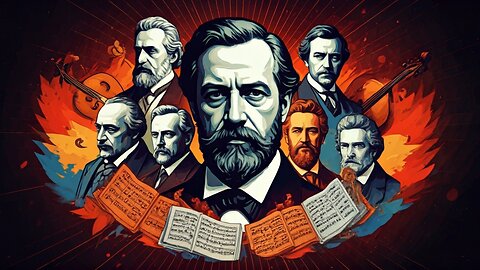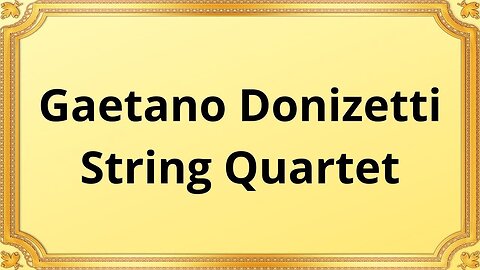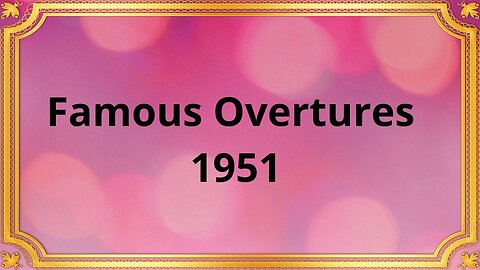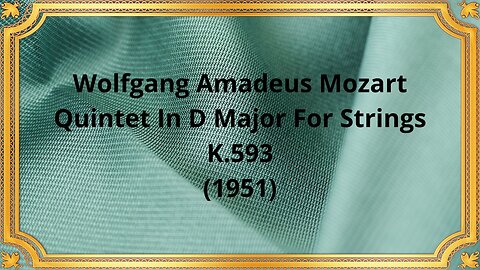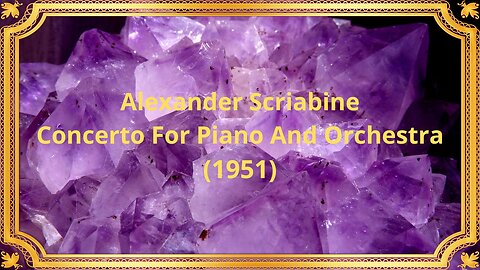
-
Christmas Classics by Tchaikovsky, Anderson, Vivaldi, Gruber, Beethoven… And More!
 Purrfect MusicIt is that time of the year! Regardless, if you celebrate Christmas with family, friends, or not at all. There is just something so uplifting about Christmas music. So, I am taking us back to the good ole Christmas classicals – plus a music box piece of Tchaikovsky’s ‘December’. Now, some of these pieces are exactly designed to be Christmas songs, like ‘Winter’ by Vivaldi, and ‘Ode to Joy’ by Beethoven. However, over the years, they have become ingrained as Christmas favs. Do you recognize these classics? Enjoy! Sleigh Ride (Leroy Anderson) The Nutcracker Suite - Act I, No.1. Overture (Tchaikovsky) Christmas Eve (Rimsky-Korsakov) Deck the Halls (Michel Rondeaeu) Messiah (Handel) Joy to the World (Lowell Mason) Cantique de Noël - O Holy Night (Adolphe Adam) Four Seasons ‘Winter’ (Vivaldi) The Nutcracker Suite - Act I, No.9. The Christmas Tree (Tchaikovsky) Symphony No.9 ‘Ode to Joy’ (Beethoven) Ding Dong Merrily on High (Charles Wood) The Nutcracker ‘Dance of the Sugar Plum Fairy’ (Tchaikovsky) Silent Night (Franz Xaver Gruber) Concerto for 2 Trumpets in C major (Vivaldi) Carol of the Bells (Mykola Leontovych) The Seasons ‘December’ (Tchaikovsky) Vom Himmel Hoch (Johann Pachelbel) Cathedral's Bells on Christmas Eve, Op. 501 (Simon Ernst) Weihnachten Am Klavier 1929 (Adolph Gluck) Fêtes de Noël, Op. 41 - 3. Chanteurs de Noel (Sergey Lyapunov) Rimsky-Korsakov - Polonaise (Nikolai Rimsky-Korsakov) 12 Concerti Grossi, Op. 6 - Concerto no. 8 in G minor (Christmas Concerto) (Arcangelo Corelli) Cute Kitty Fund! These cuties are a wonderful handful, the best decision of my life; however… it can be rather expensive to look after 6 cats! If you want to support what I do, this is a great way to do it, and… all the money goes to these cuties. For more info on THEIR story, check out the link https://givealittle.co.nz/cause/the-cat-family-that-defied-the-odds Connect with me!!! Youtube: Purrfect Music - YouTube Twitch: https://www.twitch.tv/purrfectmusic Rumble: https://rumble.com/c/PurrfectMusic Rumble: https://rumble.com/c/c-3419936 Writing and Body Language website: www.writinghealthandcbd.com9.11K views 12 comments
Purrfect MusicIt is that time of the year! Regardless, if you celebrate Christmas with family, friends, or not at all. There is just something so uplifting about Christmas music. So, I am taking us back to the good ole Christmas classicals – plus a music box piece of Tchaikovsky’s ‘December’. Now, some of these pieces are exactly designed to be Christmas songs, like ‘Winter’ by Vivaldi, and ‘Ode to Joy’ by Beethoven. However, over the years, they have become ingrained as Christmas favs. Do you recognize these classics? Enjoy! Sleigh Ride (Leroy Anderson) The Nutcracker Suite - Act I, No.1. Overture (Tchaikovsky) Christmas Eve (Rimsky-Korsakov) Deck the Halls (Michel Rondeaeu) Messiah (Handel) Joy to the World (Lowell Mason) Cantique de Noël - O Holy Night (Adolphe Adam) Four Seasons ‘Winter’ (Vivaldi) The Nutcracker Suite - Act I, No.9. The Christmas Tree (Tchaikovsky) Symphony No.9 ‘Ode to Joy’ (Beethoven) Ding Dong Merrily on High (Charles Wood) The Nutcracker ‘Dance of the Sugar Plum Fairy’ (Tchaikovsky) Silent Night (Franz Xaver Gruber) Concerto for 2 Trumpets in C major (Vivaldi) Carol of the Bells (Mykola Leontovych) The Seasons ‘December’ (Tchaikovsky) Vom Himmel Hoch (Johann Pachelbel) Cathedral's Bells on Christmas Eve, Op. 501 (Simon Ernst) Weihnachten Am Klavier 1929 (Adolph Gluck) Fêtes de Noël, Op. 41 - 3. Chanteurs de Noel (Sergey Lyapunov) Rimsky-Korsakov - Polonaise (Nikolai Rimsky-Korsakov) 12 Concerti Grossi, Op. 6 - Concerto no. 8 in G minor (Christmas Concerto) (Arcangelo Corelli) Cute Kitty Fund! These cuties are a wonderful handful, the best decision of my life; however… it can be rather expensive to look after 6 cats! If you want to support what I do, this is a great way to do it, and… all the money goes to these cuties. For more info on THEIR story, check out the link https://givealittle.co.nz/cause/the-cat-family-that-defied-the-odds Connect with me!!! Youtube: Purrfect Music - YouTube Twitch: https://www.twitch.tv/purrfectmusic Rumble: https://rumble.com/c/PurrfectMusic Rumble: https://rumble.com/c/c-3419936 Writing and Body Language website: www.writinghealthandcbd.com9.11K views 12 comments -
The Best of Classical Music: by Beethoven, Bach, Chopin, Paganini, Tchaikovsky and Mozart.
 Purrfect MusicSit back and listen to some of the best of what these composers have to offer… It might surprise you how many you recognize! 00:00 C Major Prelude (Bach) 02:07 Suite No.1 in D minor - III. Intermezzo (Tchaikovsky) 11:13 Sonata 6 Andante (Paganini) 14:02 Sonata in C Minor, D. 958 - I. Allegro (Schubert) 25:44 French suite no. 1 in E-flat major, (Bach) 28:47 E Minor Prelude – Chopin 31:17 'Moonlight' Sonata (Beethoven) 36:28 Cello Suite No. 1, G Major, Prelude – Bach 38:12 Piano Concerto no. 21 in C major, K. 467 - II. Andante (Mozart) 42:29 No.1 A Minor Waltz – Chopin 44:45 Waltz of the Flowers - Tchaikovsky 51:24 Symphony No. 5 - Beethoven 58:14 Ave Maria, D. 839 (Schubert) 1:02:25 Eine Kleine Nachtmusik – Mozart 1:08:12 French suite no. 2 in E-flat major, (Bach) Fantasia on a Theme by Thomas Tallis (Ralph Vaughan Williams) String Quartet, Op. 8 - I. Allegro appassionato (Friedrich Hermann) Don Giovanni, K. 527 - Overture (Mozart) Brandenburg Concerto no. 1 in F major, BWV. 1046 - I. Allegro (Bach) Piano Sonata no. 14 in C#m 'Moonlight', Op. 27 no. 2 - III. Presto (Beethoven) Cello Concerto in B flat Major - VIII. Allegro vivace (Vivaldi) Cute Kitty Fund! These cuties are a wonderful handful, the best decision of my life; however… it can be rather expensive to look after 6 cats! If you want to support what I do, this is a great way to do it, and… all the money goes to these cuties. For more info on THEIR story, check out the link https://givealittle.co.nz/cause/the-cat-family-that-defied-the-odds Connect with me!!! Youtube: Purrfect Music - YouTube Twitch: https://www.twitch.tv/purrfectmusic Rumble: https://rumble.com/c/PurrfectMusic Rumble: https://rumble.com/c/c-3419936 Writing and Body Language website: www.writinghealthandcbd.com6.86K views 3 comments
Purrfect MusicSit back and listen to some of the best of what these composers have to offer… It might surprise you how many you recognize! 00:00 C Major Prelude (Bach) 02:07 Suite No.1 in D minor - III. Intermezzo (Tchaikovsky) 11:13 Sonata 6 Andante (Paganini) 14:02 Sonata in C Minor, D. 958 - I. Allegro (Schubert) 25:44 French suite no. 1 in E-flat major, (Bach) 28:47 E Minor Prelude – Chopin 31:17 'Moonlight' Sonata (Beethoven) 36:28 Cello Suite No. 1, G Major, Prelude – Bach 38:12 Piano Concerto no. 21 in C major, K. 467 - II. Andante (Mozart) 42:29 No.1 A Minor Waltz – Chopin 44:45 Waltz of the Flowers - Tchaikovsky 51:24 Symphony No. 5 - Beethoven 58:14 Ave Maria, D. 839 (Schubert) 1:02:25 Eine Kleine Nachtmusik – Mozart 1:08:12 French suite no. 2 in E-flat major, (Bach) Fantasia on a Theme by Thomas Tallis (Ralph Vaughan Williams) String Quartet, Op. 8 - I. Allegro appassionato (Friedrich Hermann) Don Giovanni, K. 527 - Overture (Mozart) Brandenburg Concerto no. 1 in F major, BWV. 1046 - I. Allegro (Bach) Piano Sonata no. 14 in C#m 'Moonlight', Op. 27 no. 2 - III. Presto (Beethoven) Cello Concerto in B flat Major - VIII. Allegro vivace (Vivaldi) Cute Kitty Fund! These cuties are a wonderful handful, the best decision of my life; however… it can be rather expensive to look after 6 cats! If you want to support what I do, this is a great way to do it, and… all the money goes to these cuties. For more info on THEIR story, check out the link https://givealittle.co.nz/cause/the-cat-family-that-defied-the-odds Connect with me!!! Youtube: Purrfect Music - YouTube Twitch: https://www.twitch.tv/purrfectmusic Rumble: https://rumble.com/c/PurrfectMusic Rumble: https://rumble.com/c/c-3419936 Writing and Body Language website: www.writinghealthandcbd.com6.86K views 3 comments -
Top 12 Symphonies by Beethoven, Mozart, Haydn, Tchaikovsky, Bruckner... And More!
 Purrfect MusicBringing You Purrfect Music Every Day! Every day is a new experience, we face new challenges, and we learn new ways to overcome. And that is why every day I aim to bring something different, with bringing my own songs to the mix, along with some other great artists – from nature, meditation music, chill music, binaural beats, and of course, classical music. So, whatever mood you are in, I have something for you! Let us not forget our mascot for the channel – Wolfgang… Whom you may see pop up from time to time. Watch out for him. Cute Kitty Fund! These cuties are a wonderful handful, the best decision of my life; however… it can be rather expensive to look after 6 abandoned cats! If you want to support what I do, this is a great way to do it, and… all the money goes to these cuties. For more info on THEIR story, check out the link https://givealittle.co.nz/cause/giving-a-mother-cat-and-5-kittens-a-loving-home What can I say, symphonies were the most epic pieces of their day. From Tchaikovsky, to Beethoven, Mozart, Bruckner, Berloiz, Dvořák, Muhler, Haydn, and Brahms… We can now capture the true essence of what music is really about in this Top 12 Symphonies by their famous composers! If you like Lofi, calming frequencies, and meditation music, come on over to check out my new channel - https://www.youtube.com/@chillaxingtomusic Enjoy! 00:00 Symphony no. 9 in Em, 'New World' - IV. Allegro con fuoco (Dvořák) 11:10 Symphony No. 6 In B Minor, Op. 74, 'Pathetique' - I. Adagio, Allegro Non Troppo (Tchaikovsky) 28:40 Symphony No.40 in G minor, K.550 - IV. Finale Allegro assai (Mozart) 35:32 Symphony No.2 in minor - I. Moderato (Bruckner) 36:54 Symphony No.5 (Beethoven) 43:49 Symphony No.104 in D major, 'London' Hob.I 104 - IV. Allegro con Spirito (Haydn) 50:37 Symphony no. 8 in Bm 'Unfinished', D. 759 - I. Allegro Moderato (Schubert) 57:27 Symphony No. 3 in F Major, Op. 90 - III. Poco allegretto (Brahms) 1:03:35 Symphonie Fantastique, Op. 14 - 1 Reveries - Passions (Berlioz) 1:12:33 Symphony No.49 in F minor - II. Allegro di molto (Haydn) 1:17:17 Symphony No. 2 in D Major, Op. 73 - II. Adagio non toppo (Brahms) 1:26:30 Symphony no. 5 - I. Trauermarsch (Mahler) 1:33:50 Symphony No.4, F Minor, Op.36 - I. Andante sostenuto (Tchaikovsky) Cute Kitty Fund! These cuties are a wonderful handful, the best decision of my life; however… it can be rather expensive to look after 6 abandoned cats! If you want to support what I do, this is a great way to do it, and… all the money goes to these cuties. For more info on THEIR story, check out the link https://givealittle.co.nz/cause/giving-a-mother-cat-and-5-kittens-a-loving-home Connect with me!!! Writing and Body Language website: www.writinghealthandcbd.com Twitter: https://twitter.com/SharleneAlmond Pinterest: https://www.pinterest.com/sharlenealmond/ Instagram: https://www.instagram.com/writinghealthandcbd/ Sources • Images obtained from Canva.com • Videos obtained from Canva.com Music Credits – • Symphony No.40 in G minor, K.550 - IV. Finale Allegro assai. Das Orchester Tsumugi . https://musopen.org/music/1577-symphony-no-40-in-g-minor-k-550/. CC BY 3.0 Deed. https://creativecommons.org/licenses/by/3.0/ • Symphony no. 5 - I. Trauermarsch. Waterloo-Cedar Falls Symphony . https://musopen.org/music/44108-symphony-no-5/ CC BY 3.0 Deed. https://creativecommons.org/licenses/by/3.0/ • Symphony no. 8 in Bm 'Unfinished', D. 759 - I. Allegro Moderato. Fulda Symphonic Orchesta . https://musopen.org/music/7314-symphony-no-8-in-b-minor-unfinished-d-759/ CC BY-SA 3.0 Deed. https://creativecommons.org/licenses/by-sa/3.0/ • Symphony no. 9 in Em, 'New World' - IV. Allegro con fuoco. Symphony Orchestra . https://musopen.org/music/4942-symphony-no-9-in-e-minor-from-the-new-world-op-95/. CC BY-SA 3.0 Deed. https://creativecommons.org/licenses/by-sa/3.0/ • Symphony No.104 in D major, 'London' Hob.I:104 - IV. Allegro con Spirito. Das Orchester Tsumugi . https://musopen.org/music/5440-symphony-no104-in-d-major-london-hobi104/. CC BY-SA 3.0 Deed. https://creativecommons.org/licenses/by-sa/3.0/ •707 views 2 comments
Purrfect MusicBringing You Purrfect Music Every Day! Every day is a new experience, we face new challenges, and we learn new ways to overcome. And that is why every day I aim to bring something different, with bringing my own songs to the mix, along with some other great artists – from nature, meditation music, chill music, binaural beats, and of course, classical music. So, whatever mood you are in, I have something for you! Let us not forget our mascot for the channel – Wolfgang… Whom you may see pop up from time to time. Watch out for him. Cute Kitty Fund! These cuties are a wonderful handful, the best decision of my life; however… it can be rather expensive to look after 6 abandoned cats! If you want to support what I do, this is a great way to do it, and… all the money goes to these cuties. For more info on THEIR story, check out the link https://givealittle.co.nz/cause/giving-a-mother-cat-and-5-kittens-a-loving-home What can I say, symphonies were the most epic pieces of their day. From Tchaikovsky, to Beethoven, Mozart, Bruckner, Berloiz, Dvořák, Muhler, Haydn, and Brahms… We can now capture the true essence of what music is really about in this Top 12 Symphonies by their famous composers! If you like Lofi, calming frequencies, and meditation music, come on over to check out my new channel - https://www.youtube.com/@chillaxingtomusic Enjoy! 00:00 Symphony no. 9 in Em, 'New World' - IV. Allegro con fuoco (Dvořák) 11:10 Symphony No. 6 In B Minor, Op. 74, 'Pathetique' - I. Adagio, Allegro Non Troppo (Tchaikovsky) 28:40 Symphony No.40 in G minor, K.550 - IV. Finale Allegro assai (Mozart) 35:32 Symphony No.2 in minor - I. Moderato (Bruckner) 36:54 Symphony No.5 (Beethoven) 43:49 Symphony No.104 in D major, 'London' Hob.I 104 - IV. Allegro con Spirito (Haydn) 50:37 Symphony no. 8 in Bm 'Unfinished', D. 759 - I. Allegro Moderato (Schubert) 57:27 Symphony No. 3 in F Major, Op. 90 - III. Poco allegretto (Brahms) 1:03:35 Symphonie Fantastique, Op. 14 - 1 Reveries - Passions (Berlioz) 1:12:33 Symphony No.49 in F minor - II. Allegro di molto (Haydn) 1:17:17 Symphony No. 2 in D Major, Op. 73 - II. Adagio non toppo (Brahms) 1:26:30 Symphony no. 5 - I. Trauermarsch (Mahler) 1:33:50 Symphony No.4, F Minor, Op.36 - I. Andante sostenuto (Tchaikovsky) Cute Kitty Fund! These cuties are a wonderful handful, the best decision of my life; however… it can be rather expensive to look after 6 abandoned cats! If you want to support what I do, this is a great way to do it, and… all the money goes to these cuties. For more info on THEIR story, check out the link https://givealittle.co.nz/cause/giving-a-mother-cat-and-5-kittens-a-loving-home Connect with me!!! Writing and Body Language website: www.writinghealthandcbd.com Twitter: https://twitter.com/SharleneAlmond Pinterest: https://www.pinterest.com/sharlenealmond/ Instagram: https://www.instagram.com/writinghealthandcbd/ Sources • Images obtained from Canva.com • Videos obtained from Canva.com Music Credits – • Symphony No.40 in G minor, K.550 - IV. Finale Allegro assai. Das Orchester Tsumugi . https://musopen.org/music/1577-symphony-no-40-in-g-minor-k-550/. CC BY 3.0 Deed. https://creativecommons.org/licenses/by/3.0/ • Symphony no. 5 - I. Trauermarsch. Waterloo-Cedar Falls Symphony . https://musopen.org/music/44108-symphony-no-5/ CC BY 3.0 Deed. https://creativecommons.org/licenses/by/3.0/ • Symphony no. 8 in Bm 'Unfinished', D. 759 - I. Allegro Moderato. Fulda Symphonic Orchesta . https://musopen.org/music/7314-symphony-no-8-in-b-minor-unfinished-d-759/ CC BY-SA 3.0 Deed. https://creativecommons.org/licenses/by-sa/3.0/ • Symphony no. 9 in Em, 'New World' - IV. Allegro con fuoco. Symphony Orchestra . https://musopen.org/music/4942-symphony-no-9-in-e-minor-from-the-new-world-op-95/. CC BY-SA 3.0 Deed. https://creativecommons.org/licenses/by-sa/3.0/ • Symphony No.104 in D major, 'London' Hob.I:104 - IV. Allegro con Spirito. Das Orchester Tsumugi . https://musopen.org/music/5440-symphony-no104-in-d-major-london-hobi104/. CC BY-SA 3.0 Deed. https://creativecommons.org/licenses/by-sa/3.0/ •707 views 2 comments -
Gaetano Donizetti String Quartet No. 5 in E Minor
 Classical music_Music Inspiration#ClassicalMusic #GaetanoDonizetti #StringQuartetNo5 #EMinor #Composition #ChamberMusic #ItalianComposer #19thCenturyMusic #StringQuartet #Opera #ItalianOpera #RomanticEra #MusicalMasterpiece #Melodic #Emotional #Virtuosic #ItalianClassicalMusic #DonizettiLegacy Violins: R. Plantevin and M. Mercanton, Alo: A. Vauquet, Cello: F. Courvoisier Gaetano Donizetti, a renowned Italian composer of the 19th century, is celebrated for his contributions to the world of opera. However, his musical genius extended beyond the realms of opera, and one notable example of his brilliance in chamber music is his String Quartet No. 5 in E Minor. Composed during the Romantic era, the "Gaetano Donizetti String Quartet No. 5 in E Minor" stands as a testament to Donizetti's versatility and skill as a composer. This piece, although lesser-known compared to his operatic works, is a musical masterpiece that showcases his melodic inventiveness, emotional depth, and virtuosic writing. The quartet is scored for two violins, viola, and cello, adhering to the traditional string quartet ensemble. As the piece begins, the listener is immediately captivated by the haunting and melancholic atmosphere created by the E Minor key. Donizetti expertly weaves together intricate melodic lines, interplay between the instruments, and moments of harmonic tension and release throughout the composition. The first movement, marked Allegro moderato, introduces the main thematic material, which undergoes various transformations and developments as the movement unfolds. Donizetti's compositional skill is evident in his ability to seamlessly transition between contrasting moods and musical ideas, effortlessly keeping the listener engaged and intrigued. The second movement, marked Andante cantabile, offers a moment of respite and introspection. Here, Donizetti's gift for crafting beautiful melodies shines through. The music is deeply expressive and contemplative, inviting the listener to embark on an emotional journey. The third movement, marked Menuetto, returns to a more lively and rhythmic character. It features a playful and energetic theme, expertly passed between the instruments, creating a sense of joy and camaraderie among the musicians. The final movement, marked Allegro vivace, brings the quartet to a spirited and exhilarating conclusion. Donizetti showcases his virtuosic writing skills, incorporating fast-paced passages, intricate counterpoint, and moments of dazzling brilliance. The movement builds to a thrilling climax, leaving the listener with a sense of awe and admiration for Donizetti's compositional prowess. While Donizetti may be primarily known for his operatic works, his String Quartet No. 5 in E Minor demonstrates his ability to create captivating and emotionally charged music beyond the opera stage. This composition stands as a testament to Donizetti's legacy as a versatile and talented composer in the realm of classical music. Its melodic beauty, emotional depth, and virtuosic writing continue to captivate audiences and deserve recognition as a significant contribution to the genre of chamber music. In conclusion, Gaetano Donizetti's String Quartet No. 5 in E Minor is a musical gem that deserves appreciation. Its melodic inventiveness, emotional depth, and virtuosic writing showcase Donizetti's mastery as a composer. Whether you are an avid classical music enthusiast or a newcomer to the genre, this quartet is bound to captivate and leave a lasting impression. You have the opportunity to support the channel: https://destream.net/live/RadSiarAl/donate https://www.buymeacoffee.com/6355radsiaral87 views
Classical music_Music Inspiration#ClassicalMusic #GaetanoDonizetti #StringQuartetNo5 #EMinor #Composition #ChamberMusic #ItalianComposer #19thCenturyMusic #StringQuartet #Opera #ItalianOpera #RomanticEra #MusicalMasterpiece #Melodic #Emotional #Virtuosic #ItalianClassicalMusic #DonizettiLegacy Violins: R. Plantevin and M. Mercanton, Alo: A. Vauquet, Cello: F. Courvoisier Gaetano Donizetti, a renowned Italian composer of the 19th century, is celebrated for his contributions to the world of opera. However, his musical genius extended beyond the realms of opera, and one notable example of his brilliance in chamber music is his String Quartet No. 5 in E Minor. Composed during the Romantic era, the "Gaetano Donizetti String Quartet No. 5 in E Minor" stands as a testament to Donizetti's versatility and skill as a composer. This piece, although lesser-known compared to his operatic works, is a musical masterpiece that showcases his melodic inventiveness, emotional depth, and virtuosic writing. The quartet is scored for two violins, viola, and cello, adhering to the traditional string quartet ensemble. As the piece begins, the listener is immediately captivated by the haunting and melancholic atmosphere created by the E Minor key. Donizetti expertly weaves together intricate melodic lines, interplay between the instruments, and moments of harmonic tension and release throughout the composition. The first movement, marked Allegro moderato, introduces the main thematic material, which undergoes various transformations and developments as the movement unfolds. Donizetti's compositional skill is evident in his ability to seamlessly transition between contrasting moods and musical ideas, effortlessly keeping the listener engaged and intrigued. The second movement, marked Andante cantabile, offers a moment of respite and introspection. Here, Donizetti's gift for crafting beautiful melodies shines through. The music is deeply expressive and contemplative, inviting the listener to embark on an emotional journey. The third movement, marked Menuetto, returns to a more lively and rhythmic character. It features a playful and energetic theme, expertly passed between the instruments, creating a sense of joy and camaraderie among the musicians. The final movement, marked Allegro vivace, brings the quartet to a spirited and exhilarating conclusion. Donizetti showcases his virtuosic writing skills, incorporating fast-paced passages, intricate counterpoint, and moments of dazzling brilliance. The movement builds to a thrilling climax, leaving the listener with a sense of awe and admiration for Donizetti's compositional prowess. While Donizetti may be primarily known for his operatic works, his String Quartet No. 5 in E Minor demonstrates his ability to create captivating and emotionally charged music beyond the opera stage. This composition stands as a testament to Donizetti's legacy as a versatile and talented composer in the realm of classical music. Its melodic beauty, emotional depth, and virtuosic writing continue to captivate audiences and deserve recognition as a significant contribution to the genre of chamber music. In conclusion, Gaetano Donizetti's String Quartet No. 5 in E Minor is a musical gem that deserves appreciation. Its melodic inventiveness, emotional depth, and virtuosic writing showcase Donizetti's mastery as a composer. Whether you are an avid classical music enthusiast or a newcomer to the genre, this quartet is bound to captivate and leave a lasting impression. You have the opportunity to support the channel: https://destream.net/live/RadSiarAl/donate https://www.buymeacoffee.com/6355radsiaral87 views -
Famous Overtures (1951)
 Classical music_Music Inspiration#Beethoven #CoriolanOverture #Mendelssohn #RuyBlasOverture #EgmontOverture #ClassicalMusic #MusicalComposition #Overture #MusicHistory #Composer Publication date 1951 Tonkünstler Orchestra 1. Ludwig van Beethoven Coriolan Overture HANS WOLF, Conductor 2. Felix Mendelssohn Ruy Blas Overture GEORGE SINGER, Conductor 3. Ludwig van Beethoven's Egmont Overture HANS WOLF, Conductor Overtures hold a special place in the world of classical music, often serving as an introduction to larger compositions or as standalone pieces. Will delve into the captivating musical works of Ludwig van Beethoven's Coriolan and Egmont Overtures, as well as Felix Mendelssohn's Ruy Blas Overture. These compositions showcase the brilliance and innovation of renowned composers, leaving an indelible mark on the history of classical music. 1. Ludwig van Beethoven's Coriolan Overture Composed in 1807, Beethoven's Coriolan Overture is a musical interpretation of Heinrich Joseph von Collin's tragic play "Coriolan." The overture sets the stage for the dramatic conflict and emotional intensity of the storyline. Through its brooding and intense melodies, Beethoven captures the internal struggle of the protagonist, Coriolanus, and the tragic events that unfold. The use of contrasting themes, dynamic shifts, and powerful orchestration exemplify Beethoven's ability to convey deep emotional turmoil. 2. Felix Mendelssohn's Ruy Blas Overture Mendelssohn's Ruy Blas Overture, composed in 1839, draws inspiration from Victor Hugo's play "Ruy Blas." This overture showcases Mendelssohn's gift for melodic invention and orchestration. The piece begins with a majestic and heroic theme, which evolves into an energetic and lively section, reflecting the play's vibrant atmosphere. Mendelssohn's use of rich harmonies, intricate counterpoint, and rhythmic drive demonstrates his mastery of orchestral composition, leaving the audience captivated from start to finish. 3. Ludwig van Beethoven's Egmont Overture The Egmont Overture, composed in 1810, was written as part of the incidental music for Johann Wolfgang von Goethe's play "Egmont." Beethoven's overture encapsulates the struggles for freedom and heroism depicted in the play. The piece begins with a somber and melancholic theme, symbolizing the oppression faced by the Dutch hero, Count Egmont. As the overture progresses, it transforms into a triumphant and uplifting section, representing Egmont's bravery and eventual victory. Beethoven's powerful orchestration, dynamic contrasts, and evocative melodies make the Egmont Overture a truly iconic composition. The Coriolan Overture, Ruy Blas Overture, and Egmont Overture stand as testament to the genius of Beethoven and Mendelssohn in their ability to create emotionally charged and musically captivating works. These overtures not only serve as introductions to larger compositions but also stand on their own as powerful and evocative pieces of music. Through their innovative use of orchestration, melodic invention, and dynamic contrasts, these compositions continue to inspire and captivate audiences, leaving an enduring legacy in the world of classical music. You have the opportunity to support the channel: https://destream.net/live/RadSiarAl/donate https://www.buymeacoffee.com/6355radsiaral91 views
Classical music_Music Inspiration#Beethoven #CoriolanOverture #Mendelssohn #RuyBlasOverture #EgmontOverture #ClassicalMusic #MusicalComposition #Overture #MusicHistory #Composer Publication date 1951 Tonkünstler Orchestra 1. Ludwig van Beethoven Coriolan Overture HANS WOLF, Conductor 2. Felix Mendelssohn Ruy Blas Overture GEORGE SINGER, Conductor 3. Ludwig van Beethoven's Egmont Overture HANS WOLF, Conductor Overtures hold a special place in the world of classical music, often serving as an introduction to larger compositions or as standalone pieces. Will delve into the captivating musical works of Ludwig van Beethoven's Coriolan and Egmont Overtures, as well as Felix Mendelssohn's Ruy Blas Overture. These compositions showcase the brilliance and innovation of renowned composers, leaving an indelible mark on the history of classical music. 1. Ludwig van Beethoven's Coriolan Overture Composed in 1807, Beethoven's Coriolan Overture is a musical interpretation of Heinrich Joseph von Collin's tragic play "Coriolan." The overture sets the stage for the dramatic conflict and emotional intensity of the storyline. Through its brooding and intense melodies, Beethoven captures the internal struggle of the protagonist, Coriolanus, and the tragic events that unfold. The use of contrasting themes, dynamic shifts, and powerful orchestration exemplify Beethoven's ability to convey deep emotional turmoil. 2. Felix Mendelssohn's Ruy Blas Overture Mendelssohn's Ruy Blas Overture, composed in 1839, draws inspiration from Victor Hugo's play "Ruy Blas." This overture showcases Mendelssohn's gift for melodic invention and orchestration. The piece begins with a majestic and heroic theme, which evolves into an energetic and lively section, reflecting the play's vibrant atmosphere. Mendelssohn's use of rich harmonies, intricate counterpoint, and rhythmic drive demonstrates his mastery of orchestral composition, leaving the audience captivated from start to finish. 3. Ludwig van Beethoven's Egmont Overture The Egmont Overture, composed in 1810, was written as part of the incidental music for Johann Wolfgang von Goethe's play "Egmont." Beethoven's overture encapsulates the struggles for freedom and heroism depicted in the play. The piece begins with a somber and melancholic theme, symbolizing the oppression faced by the Dutch hero, Count Egmont. As the overture progresses, it transforms into a triumphant and uplifting section, representing Egmont's bravery and eventual victory. Beethoven's powerful orchestration, dynamic contrasts, and evocative melodies make the Egmont Overture a truly iconic composition. The Coriolan Overture, Ruy Blas Overture, and Egmont Overture stand as testament to the genius of Beethoven and Mendelssohn in their ability to create emotionally charged and musically captivating works. These overtures not only serve as introductions to larger compositions but also stand on their own as powerful and evocative pieces of music. Through their innovative use of orchestration, melodic invention, and dynamic contrasts, these compositions continue to inspire and captivate audiences, leaving an enduring legacy in the world of classical music. You have the opportunity to support the channel: https://destream.net/live/RadSiarAl/donate https://www.buymeacoffee.com/6355radsiaral91 views -
Wolfgang Amadeus Mozart Quintet In D Major For Strings K.593 (1951)
 Classical music_Music Inspiration#Mozart #ClassicalMusic #StringEnsemble #ChamberMusic #MusicComposition #MusicHistory #MusicTheory #MusicAppreciation #MusicAnalysis #ClassicalEra Publication date 1951 Budapest String Quartet Milton Katims, viola The Wolfgang Amadeus Mozart Quintet in D Major for Strings, K.593, is a remarkable composition that showcases the genius of one of classical music's most celebrated composers, Wolfgang Amadeus Mozart. As a quintet, this piece is written for two violins, two violas, and a cello, representing a string ensemble that creates a rich and harmonious sound. Composed during Mozart's prolific period in Vienna in 1790, the Quintet in D Major is a testament to his mastery of form and structure. This work is a prime example of classical chamber music, a genre that flourished during the classical era. Chamber music, typically written for small ensembles, allowed for intimate and intricate musical dialogue among the instruments. The Quintet in D Major begins with a majestic and lively Allegro movement. The opening theme is presented by the violins, followed by the violas and cello, creating a beautiful interplay of melodies. The movement is characterized by its joyful and exuberant nature, showcasing Mozart's exceptional craftsmanship and his ability to compose music that is both technically challenging and emotionally engaging. The second movement, marked Andante, contrasts the first movement with its serene and introspective atmosphere. It features a lyrical melody that is passed between the instruments, evoking a sense of tranquility and introspection. This movement demonstrates Mozart's sensitivity and his ability to create deeply emotive music. The third movement, a Menuetto, is a delightful and graceful dance in triple meter. It exhibits a charming and playful character, with each instrument taking turns to present the dance-like melodies. Mozart's skillful handling of the interplay between the instruments adds to the overall charm and elegance of this movement. The final movement, marked Allegro, brings the quintet to a rousing and energetic conclusion. It is a spirited and lively movement that showcases Mozart's virtuosity as a composer. The interweaving melodies and the intricate counterpoint between the instruments create a sense of exhilaration and joy. Overall, the Quintet in D Major for Strings, K.593, is a testament to Mozart's musical genius and his ability to craft intricate and emotionally captivating compositions. Through its four movements, this quintet showcases Mozart's mastery of form, his gift for melody, and his ability to create music that resonates with audiences even centuries later. Wolfgang Amadeus Mozart Quintet in D Major for Strings, K.593, offers a captivating and immersive musical experience. Its combination of technical brilliance, emotional depth, and sheer musical beauty make it a true gem in the classical music repertoire. You have the opportunity to support the channel: https://destream.net/live/RadSiarAl/donate155 views
Classical music_Music Inspiration#Mozart #ClassicalMusic #StringEnsemble #ChamberMusic #MusicComposition #MusicHistory #MusicTheory #MusicAppreciation #MusicAnalysis #ClassicalEra Publication date 1951 Budapest String Quartet Milton Katims, viola The Wolfgang Amadeus Mozart Quintet in D Major for Strings, K.593, is a remarkable composition that showcases the genius of one of classical music's most celebrated composers, Wolfgang Amadeus Mozart. As a quintet, this piece is written for two violins, two violas, and a cello, representing a string ensemble that creates a rich and harmonious sound. Composed during Mozart's prolific period in Vienna in 1790, the Quintet in D Major is a testament to his mastery of form and structure. This work is a prime example of classical chamber music, a genre that flourished during the classical era. Chamber music, typically written for small ensembles, allowed for intimate and intricate musical dialogue among the instruments. The Quintet in D Major begins with a majestic and lively Allegro movement. The opening theme is presented by the violins, followed by the violas and cello, creating a beautiful interplay of melodies. The movement is characterized by its joyful and exuberant nature, showcasing Mozart's exceptional craftsmanship and his ability to compose music that is both technically challenging and emotionally engaging. The second movement, marked Andante, contrasts the first movement with its serene and introspective atmosphere. It features a lyrical melody that is passed between the instruments, evoking a sense of tranquility and introspection. This movement demonstrates Mozart's sensitivity and his ability to create deeply emotive music. The third movement, a Menuetto, is a delightful and graceful dance in triple meter. It exhibits a charming and playful character, with each instrument taking turns to present the dance-like melodies. Mozart's skillful handling of the interplay between the instruments adds to the overall charm and elegance of this movement. The final movement, marked Allegro, brings the quintet to a rousing and energetic conclusion. It is a spirited and lively movement that showcases Mozart's virtuosity as a composer. The interweaving melodies and the intricate counterpoint between the instruments create a sense of exhilaration and joy. Overall, the Quintet in D Major for Strings, K.593, is a testament to Mozart's musical genius and his ability to craft intricate and emotionally captivating compositions. Through its four movements, this quintet showcases Mozart's mastery of form, his gift for melody, and his ability to create music that resonates with audiences even centuries later. Wolfgang Amadeus Mozart Quintet in D Major for Strings, K.593, offers a captivating and immersive musical experience. Its combination of technical brilliance, emotional depth, and sheer musical beauty make it a true gem in the classical music repertoire. You have the opportunity to support the channel: https://destream.net/live/RadSiarAl/donate155 views -
Ludwig van Beethoven Serenade In D Major, Op 25 For Flute, Violin And Viola (1951)
 Classical music_Music Inspiration#Beethoven #ClassicalMusic #SerenadeInDMajor #Flute #Violin #Viola #ChamberMusic #ClassicalComposer #MusicalComposition Publication date 1951 JULIUS BAKER, Flute * JOSEPH FUCHS, Violin + LILLIAN FUCHS, Viola + HARRY FUCHS, Cello "Ludwig van Beethoven Serenade In D Major, Op. 25 For Flute, Violin And Viola" is a remarkable chamber music piece composed by the iconic Ludwig van Beethoven. Composed in 1801, this serenade is a testament to Beethoven's mastery of classical forms and his ability to innovate within the constraints of traditional structures. The work is scored for flute, violin, and viola, making it a delightful showcase of the interplay between these three instruments. The serenade is divided into four movements, each with its own distinctive character and musical themes. The opening movement, marked "Entrata: Allegro," introduces the listener to a lively and spirited theme that sets the tone for the entire work. The flute, violin, and viola engage in a playful dialogue, showcasing Beethoven's skill in writing for chamber ensembles. Following the opening movement, the piece transitions into a graceful and lyrical "Tempo ordinario d'un Menuetto" (Menuetto) movement. This movement, in ternary form, demonstrates Beethoven's ability to infuse elegance and charm into his compositions. The interplay between the flute, violin, and viola creates a sense of intimacy and camaraderie, drawing the listener into the musical conversation. The third movement, "Allegro molto," serves as a vibrant and energetic contrast to the preceding movement. Beethoven's use of rhythmic drive and dynamic contrasts adds excitement and vigor to the serenade, showcasing his ability to create engaging and spirited music within the chamber music genre. The final movement, "Andante con Variazioni," presents a series of variations on a beautiful theme, allowing each instrument to shine in its own right while maintaining a cohesive musical narrative. Beethoven's inventive variations highlight the expressive capabilities of the flute, violin, and viola, leaving a lasting impression on the listener. Overall, "Ludwig van Beethoven Serenade In D Major, Op. 25 For Flute, Violin And Viola" stands as a testament to Beethoven's compositional prowess and his ability to craft engaging and expressive music for chamber ensembles. The work's blend of elegance, vitality, and innovation continues to captivate audiences, cementing its status as a timeless masterpiece in the chamber music repertoire. You have the opportunity to support the channel: https://destream.net/live/RadSiarAl/donate159 views
Classical music_Music Inspiration#Beethoven #ClassicalMusic #SerenadeInDMajor #Flute #Violin #Viola #ChamberMusic #ClassicalComposer #MusicalComposition Publication date 1951 JULIUS BAKER, Flute * JOSEPH FUCHS, Violin + LILLIAN FUCHS, Viola + HARRY FUCHS, Cello "Ludwig van Beethoven Serenade In D Major, Op. 25 For Flute, Violin And Viola" is a remarkable chamber music piece composed by the iconic Ludwig van Beethoven. Composed in 1801, this serenade is a testament to Beethoven's mastery of classical forms and his ability to innovate within the constraints of traditional structures. The work is scored for flute, violin, and viola, making it a delightful showcase of the interplay between these three instruments. The serenade is divided into four movements, each with its own distinctive character and musical themes. The opening movement, marked "Entrata: Allegro," introduces the listener to a lively and spirited theme that sets the tone for the entire work. The flute, violin, and viola engage in a playful dialogue, showcasing Beethoven's skill in writing for chamber ensembles. Following the opening movement, the piece transitions into a graceful and lyrical "Tempo ordinario d'un Menuetto" (Menuetto) movement. This movement, in ternary form, demonstrates Beethoven's ability to infuse elegance and charm into his compositions. The interplay between the flute, violin, and viola creates a sense of intimacy and camaraderie, drawing the listener into the musical conversation. The third movement, "Allegro molto," serves as a vibrant and energetic contrast to the preceding movement. Beethoven's use of rhythmic drive and dynamic contrasts adds excitement and vigor to the serenade, showcasing his ability to create engaging and spirited music within the chamber music genre. The final movement, "Andante con Variazioni," presents a series of variations on a beautiful theme, allowing each instrument to shine in its own right while maintaining a cohesive musical narrative. Beethoven's inventive variations highlight the expressive capabilities of the flute, violin, and viola, leaving a lasting impression on the listener. Overall, "Ludwig van Beethoven Serenade In D Major, Op. 25 For Flute, Violin And Viola" stands as a testament to Beethoven's compositional prowess and his ability to craft engaging and expressive music for chamber ensembles. The work's blend of elegance, vitality, and innovation continues to captivate audiences, cementing its status as a timeless masterpiece in the chamber music repertoire. You have the opportunity to support the channel: https://destream.net/live/RadSiarAl/donate159 views -
Alexander Scriabine Concerto For Piano And Orchestra (1951)
 Classical music_Music Inspiration#AlexanderScriabin #ConcertoForPianoAndOrchestra #ClassicalMusic #RomanticEra #RussianComposers #OrchestralWorks #MusicalComposition #MusicAnalysis #PianoConcertos #MusicAppreciation Publication date 1951 PAUL BADURA-SKODA, Piano VIENNA SYMPHONY ORCHESTRA conducted by HENRY SWOBODA Alexander Scriabin, a key figure of the Russian Symbolist movement in music, has left behind a wealth of compositions that continue to enthrall listeners with their complexity and ingenuity. One such noteworthy composition is his Concerto for Piano and Orchestra in F sharp minor, Op. 20. This piece stands as a testament to Scriabin's unique harmonic language and his ability to create a profound emotional impact through music. Composed in the summer of 1896, when Scriabin was just 24 years old, the Concerto for Piano and Orchestra is a work of great depth and intricacy. It is a three-movement composition, each movement showcasing a different facet of Scriabin's compositional prowess. The first movement, marked "Allegro," begins with a dramatic and lyrical theme introduced by the piano, which is then echoed by the orchestra. This theme, full of chromaticism and rich harmonies, sets the tone for the rest of the movement. The interplay between the piano and orchestra is skillfully handled, with the piano often engaging in virtuosic passages while the orchestra provides a lush harmonic backdrop. The second movement, "Andante," is a slower, more introspective piece. The piano introduces a hauntingly beautiful melody, which is later developed by the orchestra. This movement is characterized by its dreamy, almost ethereal quality, showcasing Scriabin's ability to evoke a wide range of emotions through his music. The final movement, "Allegro moderato," is a lively and rhythmically complex piece. The piano and orchestra engage in a vigorous dialogue, with the piano often taking the lead with rapid, virtuosic passages. The movement concludes with a triumphant restatement of the main theme, bringing the concerto to a satisfying close. Scriabin's Concerto for Piano and Orchestra is a brilliant demonstration of his unique compositional style. The work is characterized by its complex harmonic language, virtuosic piano writing, and the masterful interplay between the soloist and orchestra. Furthermore, the emotional depth and intensity of the music make it a captivating listening experience. In conclusion, Alexander Scriabin's Concerto for Piano and Orchestra in F sharp minor stands as a significant contribution to the piano concerto repertoire. With its complex harmonies, lyrical themes, and profound emotional depth, it offers a glimpse into the mind of one of the most innovative composers of the late Romantic era.294 views 1 comment
Classical music_Music Inspiration#AlexanderScriabin #ConcertoForPianoAndOrchestra #ClassicalMusic #RomanticEra #RussianComposers #OrchestralWorks #MusicalComposition #MusicAnalysis #PianoConcertos #MusicAppreciation Publication date 1951 PAUL BADURA-SKODA, Piano VIENNA SYMPHONY ORCHESTRA conducted by HENRY SWOBODA Alexander Scriabin, a key figure of the Russian Symbolist movement in music, has left behind a wealth of compositions that continue to enthrall listeners with their complexity and ingenuity. One such noteworthy composition is his Concerto for Piano and Orchestra in F sharp minor, Op. 20. This piece stands as a testament to Scriabin's unique harmonic language and his ability to create a profound emotional impact through music. Composed in the summer of 1896, when Scriabin was just 24 years old, the Concerto for Piano and Orchestra is a work of great depth and intricacy. It is a three-movement composition, each movement showcasing a different facet of Scriabin's compositional prowess. The first movement, marked "Allegro," begins with a dramatic and lyrical theme introduced by the piano, which is then echoed by the orchestra. This theme, full of chromaticism and rich harmonies, sets the tone for the rest of the movement. The interplay between the piano and orchestra is skillfully handled, with the piano often engaging in virtuosic passages while the orchestra provides a lush harmonic backdrop. The second movement, "Andante," is a slower, more introspective piece. The piano introduces a hauntingly beautiful melody, which is later developed by the orchestra. This movement is characterized by its dreamy, almost ethereal quality, showcasing Scriabin's ability to evoke a wide range of emotions through his music. The final movement, "Allegro moderato," is a lively and rhythmically complex piece. The piano and orchestra engage in a vigorous dialogue, with the piano often taking the lead with rapid, virtuosic passages. The movement concludes with a triumphant restatement of the main theme, bringing the concerto to a satisfying close. Scriabin's Concerto for Piano and Orchestra is a brilliant demonstration of his unique compositional style. The work is characterized by its complex harmonic language, virtuosic piano writing, and the masterful interplay between the soloist and orchestra. Furthermore, the emotional depth and intensity of the music make it a captivating listening experience. In conclusion, Alexander Scriabin's Concerto for Piano and Orchestra in F sharp minor stands as a significant contribution to the piano concerto repertoire. With its complex harmonies, lyrical themes, and profound emotional depth, it offers a glimpse into the mind of one of the most innovative composers of the late Romantic era.294 views 1 comment
